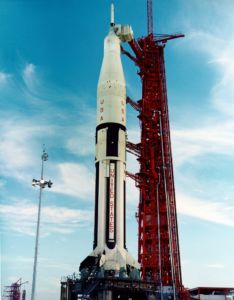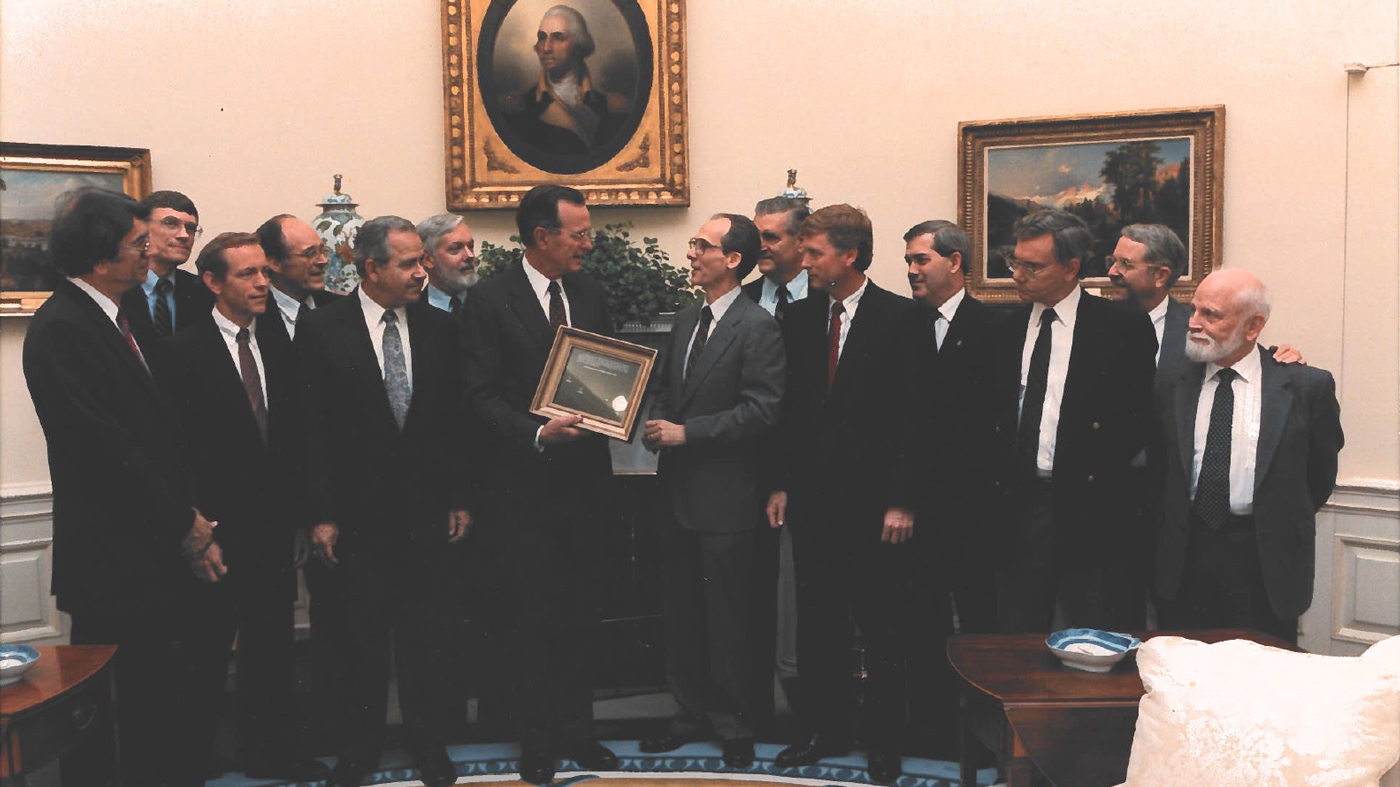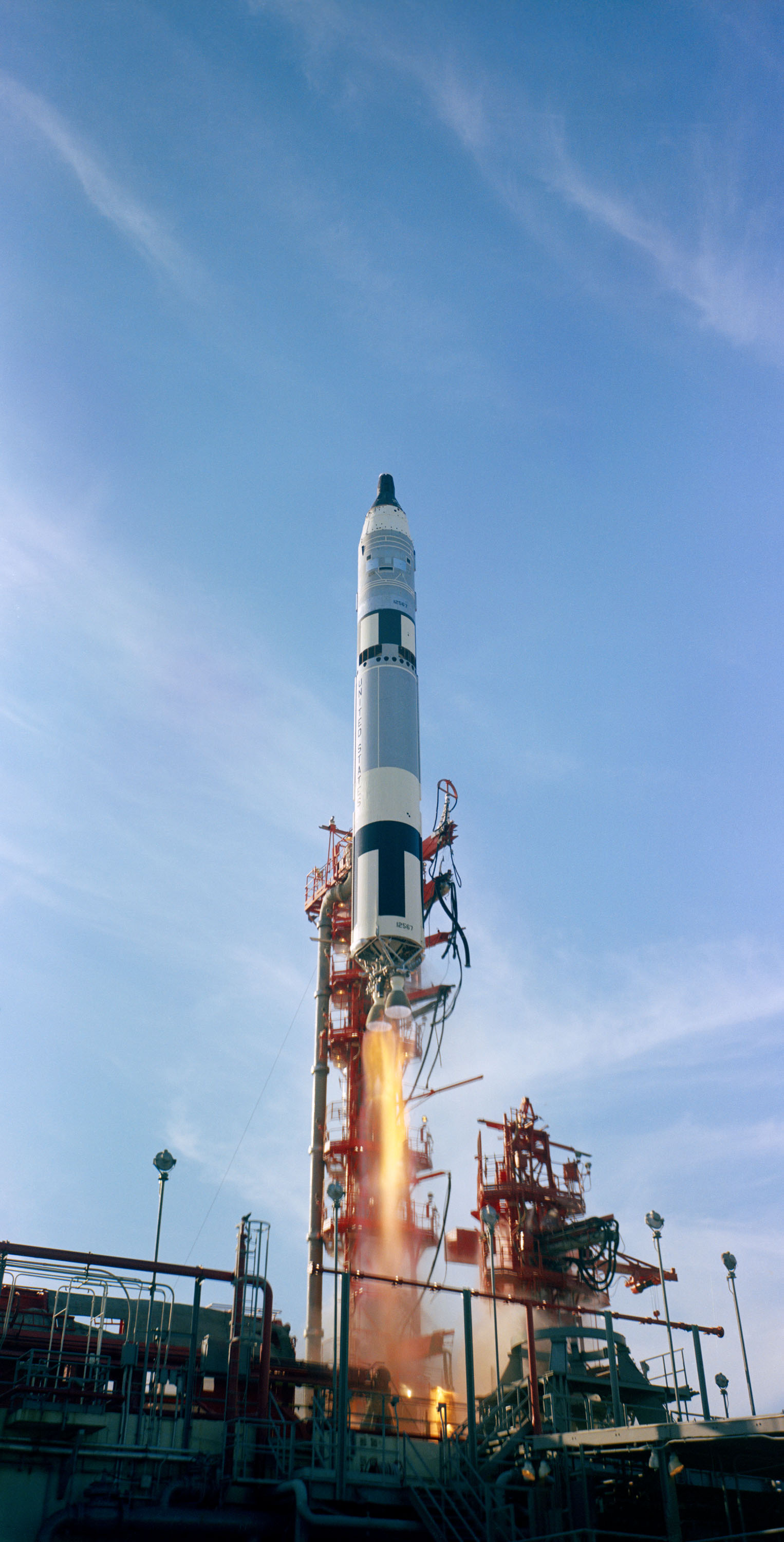
A rare photo in September 1966 showcased two human space flight programs. Gemini, designed to perfect techniques such as long duration human space flight, rendezvous and docking and space walking, all necessary to accomplish a lunar mission, was winding down after a series of successes. Apollo, behind Gemini in the photo, was in its early stages and would ultimately accomplish President Kennedy’s goal to safely land men on the Moon and return them safely to the Earth before the end of the decade.
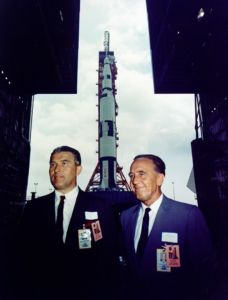
On September 12, Gemini 11 launched from Pad 19 at the Cape Canaveral Air Force Station (CCAFS) in Florida, with Command Pilot Charles “Pete” Conrad and Pilot Richard Gordon on board. The primary goal for their three-day mission was completed quickly: to rendezvous and dock with the Agena Target Vehicle launched earlier that day, and for the first time ever do it on their first revolution. Still docked to the Agena and using its engine, they raised their orbit to 853 miles, the farthest humans had traveled away from Earth to date. Using a tether to link their Gemini spacecraft to the Agena, they performed the first simple test of creating artificial gravity by spinning the two craft around their center of mass. Gordon completed two space walks totaling two hours and 42 minutes during the mission. After three days in space, Conrad and Gordon splashed down in the Atlantic Ocean and were recovered aboard the USS Guam, successfully completing the second to last Gemini mission. The Gemini 11 spacecraft is on display at the California Science Center in Los Angeles. Two months later, Gemini 12 closed out the highly successful program that saw 10 manned missions in less than two years and paved the way for Apollo.
Meanwhile, the Apollo Program was making significant progress during 1966. The first Saturn 5 Moon rocket, a non-flight Facility Verification Vehicle called 500F was stacked in the Vehicle Assembly Building (VAB) and rolled out to the launch pad for fit checks. Three smaller Saturn 1B rockets made unmanned test flights, two testing Apollo Command and Service Modules (CSM) during suborbital missions and the third testing the performance of the hydrogen tank in the booster’s upper stage, critical for understanding how that super-cold fuel behaves in weightlessness.
Various stages of Saturn 500F began to arrive at the VAB in late 1965. Actual stacking of the vehicle on the Mobile Launch Platform began March 15, 1966, the first time a Saturn 5 had been stacked in the VAB. For this rocket, a mockup of the Apollo CSM was used, and it along with the Spacecraft LM Adapter and the Launch Escape System (LES) was added to the booster on May 2, completing the first Saturn 5 stack.
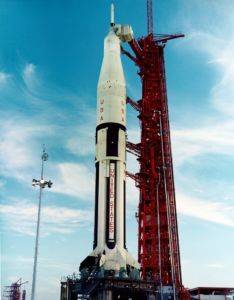
Saturn 500F rolled out to Launch Complex 39A on May 25, exactly five years to the day after President Kennedy committed the United States to a Moon landing before the end of the decade. But two weeks later on June 8, as Hurricane Alma approached Florida, NASA managers decided to roll 500F back to the VAB for safety reasons. After just two days in the hangar, it was time to roll out again to the Pad – an unexpected bonus for ground crews to get additional experience in rollout procedures.
Meanwhile, at the nearby CCAFS, two Saturn 1Bs were being readied for flight. So between May 25 and July 5, three Saturn rockets stood on their respective launch pads, the only time in the history of Saturn rockets that happened. Unfortunately, no photographs have been found documenting this historic occurrence.
All the launch pad tests completed, Saturn 500F rolled back to the VAB on October 14. But before destacking 500F, NASA engineers wanted to perform one more test on the vehicle: a “shake test.” Normally this is done under controlled conditions in a vibration chamber, but the Saturn 5 was so large that technicians resorted to somewhat low-tech methods. Initially, a group of engineers laying on their backs on one of the upper work platforms began pushing against the rocket. When this didn’t provide the needed motion, other engineers looped a sling around the Command Module and began pulling on the rope to get the rocket swaying at its natural frequency. While this had the desired effect for a vibration test it had the unintended consequence of causing the LES to come loose and fall on one of the work platforms. Fortunately, no injuries or significant damage resulted from this incident.
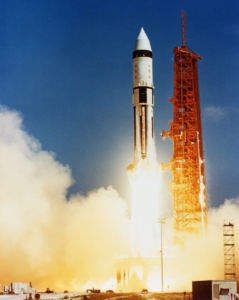
One week after its return to the VAB, technicians began the destacking process. Plans to roll out Saturn 500F to test Pad 39B in 1967 were considered unnecessary and scrapped. Workers in the VAB remained busy, as only a few days after they completed destacking Saturn 500F, they began work on stacking Saturn 501, which in November 1967 completed the first successful flight of the Saturn 5 during the unmanned Apollo 4 mission.
For more on the Gemini 11 mission, please visit https://www.jsc.nasa.gov/history/gemini.htm
To see the unusual Saturn 500F shake test, please visit https://youtu.be/PnsFFhKqXXo
